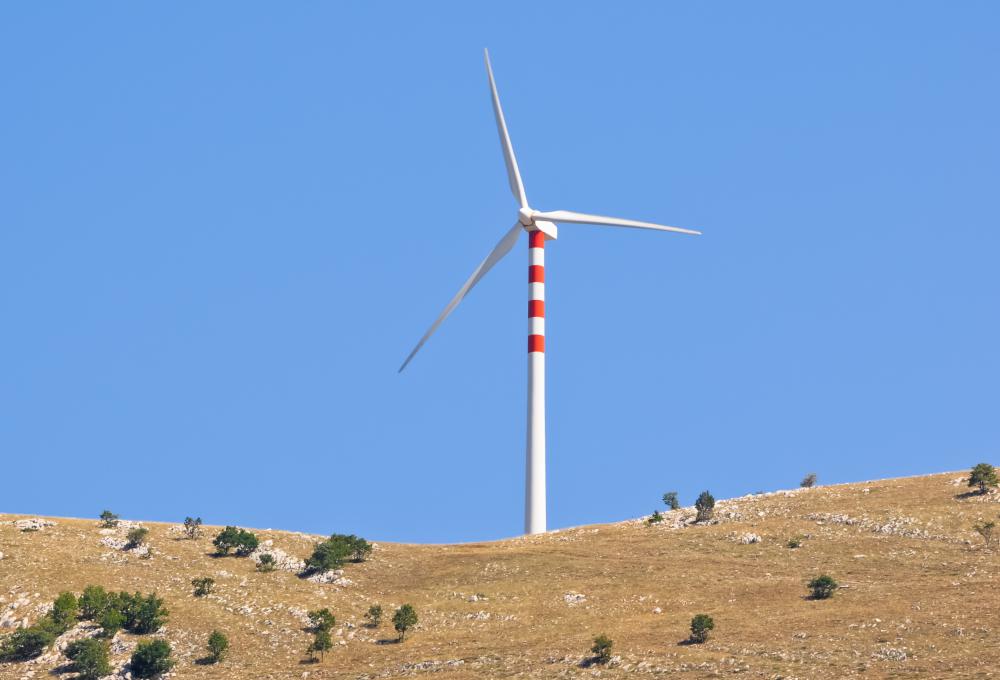At WiseGEEK, we're committed to delivering accurate, trustworthy information. Our expert-authored content is rigorously fact-checked and sourced from credible authorities. Discover how we uphold the highest standards in providing you with reliable knowledge.
What is a Sonic Anemometer?
A sonic anemometer is an instrument that measures wind velocity using solid-state ultrasonic transduction. It is designed to emit ultrasonic pulses between opposing transducers in order to measure the effect of a wind medium on the mechanical energy of acoustical vibrations. By electronic monitoring of pulse transit times across a path in pairs or multiple pairs, a sonic anemometer detects wind force and direction and can infer other readings such as temperature and atmospheric changes.
Measurements of pulse transits can be detected in one, two, or three dimensional flows. Resolution is determined by the path length between transducers, which is typically around 4 inches (about 10cm) to 8 inches (about 20cm). Sonic anemometer devices service even turbulent measurements with fine temporal resolution of 20 hertz (Hz) or more.

As the speed of sound can be affected by temperature, these instruments can function as thermometers, though rain has been known to vary speed of sound. The lack of moving parts makes them suitable for use in weather-adverse locations, such as weather stations, buoys, and in other marine and aerospace placements. In design, they may be affixed to brackets, poles, or other support structures.
Measurements of various elements taken together permit the sonic anemometer to function; these include the gap length between transducer faces placed in opposing compass points; the speed of sound; velocities of gas flow; and the variable time it takes for an ultrasound pulse to travel to its opposite transducer. The instrument compares the speeds of pulses, for example, traveling north to south, and south to north respectively. Pulses traveling against the wind arrive later than those traveling with the wind; the two measures are compared and wind speed is calculated. Some instruments also permit diagnostics to check machine function in weather conditions with zero wind speeds. They are sometimes fitted with hygrometers, barometers, and data loggers for analyzing humidity and barometric pressure.
Another key aspect to sonic anemometer technology is the robustness of its physical characteristics. Various designs exist for specialized placement conditions. For example, instruments made for salt water are designed to be corrosion-resistant, a marked advantage over traditional cup-and-vane anemometers. A technology capable of measurements from slight variations of wind conditions to changes due to solar heating on a grand scale has uses in almost any environment.
Others are made to survive extreme temperatures and high wind speeds. Self-heating capabilities protect them from freezing over. Sonic anemometers are also developed to withstand placement in hazardous populated environments such as industrial sites, offshore rigs, arctic stations, and oceangoing vessels.
In field applications, sonic anemometer technology serves other goals besides weather station monitoring. These instruments work in pollution control, building safety, agriculture, and numerous other contexts. They provide a small-scale analog for wind turbines by assessing year-long wind availability for wind-farm planning. In addition, they assist in aviation meteorology, energy, and disaster control. These devices also serve a host of applications in urban, environmental, and civil engineering contexts, and wherever analysis of wind conditions provides a vital element in decision making.
AS FEATURED ON:
AS FEATURED ON:











Discuss this Article
Post your comments